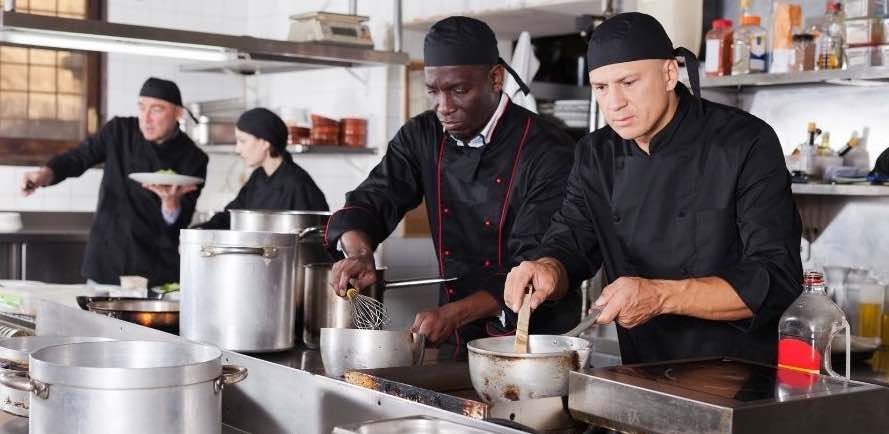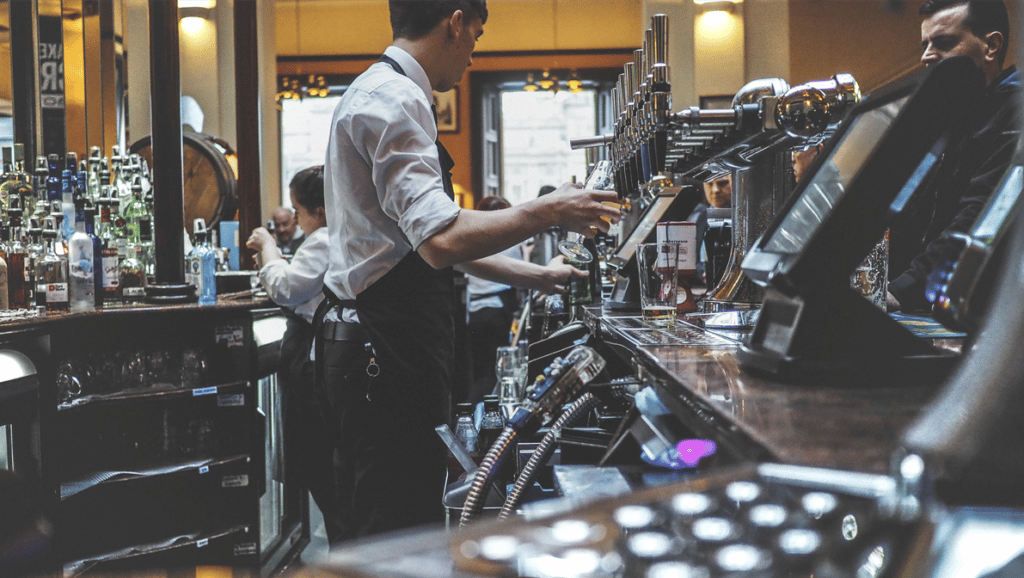For multi-unit restaurant operators, your store-level restaurant manager is one of the greatest influences on an individual location’s performance.
If you have multiple locations, you have probably seen that even within the same concept, stores can vary significantly in culture, performance, quality, service, and more. Your restaurant group can emphasize core values, a powerful mission statement, or introduce a new company-wide initiative—and yet, there may still be stores that remain underperforming.
Upper management or corporate can implement any number of policies, but it is the store manager that connects it to individual restaurant team members. Store-level managers are the ones who guide your teams toward the goals made by restaurant group leadership. From hiring and managing staff to inventory management and the guest experience, your store-level managers hold the key to your restaurant group’s success.
Most importantly, store-level managers play a vital role in food and labor costs at their locations, so it’s imperative to guide them to prime cost goals, broken down by week, day and day part.
Equiping them with data and the ability to make day-to-day decisions based on that data, is imperative for driving your profitability.
How do store-level managers impact your restaurant group’s bottom line?
Your restaurant group certainly has short-term and long-term metrics and KPIs that you are aiming for in all operations. But it is the day-to-day decisions in a restaurant that impact your restaurant group’s bottom line on every weekly, quarterly, or annual report.
Your managers are the link between the day-to-day operations and your company’s overall success. They need to buy into the idea that they have both the responsibility and power to act
Managers’ influence on hiring and employee retention
When you consider training hours, materials, waste from mistakes, and service impact, constantly hiring because of a high turnover rate consumes both money and resources.
Your restaurant managers need to focus on hiring the best talent and prioritize retention from the beginning of the restaurant hiring process through onboarding.
First, empower your managers with an efficient and effective restaurant hiring process. This can include everything from interview templates in your applicant tracking system to automated alerts that make it even easier for your managers to communicate with applicants. Ultimately, you’re trying to allow your managers to spend time developing relationships with applicants to smooth out the hiring and onboarding process.
Next, examine your store-level manager’s role in building the culture of an individual store. Each manager, across all your locations, needs to train and retain a top-tier staff. When individual restaurant employees feel like they are part of a team, complete with positive and strong relationships, they are less likely to leave.
The culture your store-level manager builds, combined with the right staff, encourages teamwork at your restaurants and tampers down the turnover rate.
Optimizing labor costs
Your overall restaurant labor cost is based on what happens during every shift, every part of the day. To hit your optimal labor numbers, your managers need to be constantly tweaking restaurant scheduling. Rather than trying to make massive changes at the end of a reporting period to hit certain metrics, your managers should be empowered to make small changes that add up to an overall efficient labor cost. This approach has less wear and tear on staff dynamics, and also contributes to a better guest experience.
As with nearly every other area of operations, your store-level managers need information to make the best decisions. For restaurant labor, your managers should be able to use sales and labor forecasting data when they schedule. This allows them to make schedules based on historical sales data, aligning scheduled labor hours with their target labor cost.
Then, during the actual scheduled hours, managers can use almost real-time sales data to make informed labor decisions throughout the day. Using strategic breaks, call-ins, or cutting staff members early can further align goal restaurant labor costs with actual sales levels.
Managers can only make data-driven labor cost tweaks if they have the information they need—otherwise, they’ll be operating only on “manager’s gut.” Advanced scheduling tools like single-view dashboards and custom labor matrixes allow managers to easily access data and spread their labor hours where needed.
Streamlining inventory and reducing CoGS
Taking accurate inventory is an absolutely essential task for optimizing your food cost. And yet, restaurant inventory management has historically been a complicated, tedious, and time-consuming process for store-level managers.
Today, there are many technology tools that can be used to lighten the inventory burden for your managers. For example, the latest inventory management systems can allow multiple users to take inventory on separate devices. With one team member counting in the walk-in, and another counting in dry storage, numbers are updated in real time (helping avoid double counting) and restaurant inventory is completed faster.
In addition, customizable templates for specific stores also help managers streamline inventory. Your restaurant manager can drag and drop a template to create a “sheet-to-shelf” stock count list. Not only can a custom, reusable template make inventory takers less likely to make errors, but it can also speed up the process.
While these tools may seem like small improvements, your store manager’s ability to effectively take inventory has a huge impact on profitability. Your restaurant inventory counts provide the numbers for invaluable restaurant management tools like actual vs. theoretical food cost to reduce food waste and increase food usage efficiency. Inventory informs your prep work, allowing you to save unnecessary labor costs and minimize food waste. Overall, your cost of goods sold (CoGS) can only be tracked if you know exactly what is on your shelves.
Creating a positive guest experience
Although it is slightly less tangible in terms of reporting, your manager also has an outsized influence on the guest experience. Your store-level manager oversees the immediate details of a guest experience and is also in charge of resolving most customer complaints.
You can gain insight into how your managers are doing in a couple ways. If you have a loyalty program app, you can leverage post-purchase or monthly customer surveys to get feedback. You can also consider a secret shopper program for your locations, in order to get other insight into store performance.
If you are finding issues with customer service, consider ways you can help your restaurant managers improve. Are your managers spending most of their time in the back office, running reports or inputting invoices? Your managers should be on the floor with staff and guests, improving the guest experience. Free up time for your managers through strategic tools and restaurant management automations.
Impacting your sales and profit margin
Your managers contribute to the overall profit margin of your restaurant group through everything mentioned above—employee retention, restaurant labor costs, CoGS, guest experience, etc. But ensuring that your managers positively impact sales and profit margin depends on more than issuing metrics and KPIs to hit.
Help your managers hold themselves accountable for how their stores perform, every day. To be clear, this isn’t the same thing as you holding them accountable (which places you vs. the manager). Rather, empowered store-level managers have the right data and information in their hands. With the right tools, they can take action on timely data to act quickly, creatively, and intelligently with their decisions.
For example, your restaurant’s profit and loss (P&L) statement is one of the primary indicators of business financial health. If your store managers understand every detail of this report and are able to engage with it frequently, they can consistently improve their impact on that store’s profitability.
Consider requiring all managers to learn how to read a P& and encourage them to submit a weekly P&L that explains anything outside of given budgets. This requires that managers can dive into P&L reports on their own, accessing sales and invoices quickly.
An initiative like this example not only helps cultivate responsibility in your store-level managers, but it can also help managers see how their decisions impact operational costs on a frequent basis. After all, if your managers are hitting goals on a weekly basis, the quarterly or annual goals will follow.
Training your managers to run their stores more efficiently and profitably
Ultimately, empowering store-level managers to manage their teams requires communication. They need to understand that they are actually managing their numbers, instead of just hearing from restaurant group leadership that they are doing “bad” or “good.”
Invest in your managers by not only asking for accountability, but also being responsive to what they need. Consistent results require consistent data, so ensure that your managers are able to easily access restaurant reporting and relevant numbers (without needing to spend hours in the back office).
Finally, build a transparent relationship with your restaurant managers by letting them know that operational perfection isn’t expected every day. Tools like a manager log should be used to log tasks or create notes for individual shifts. These notes can be used to improve operations, flagging follow up reminders and facilitating direct communication. By honestly addressing issues with your managers, you enable your store-level managers to become more confident and effective.
Conclusion
Your restaurant group’s profitability depends on a lot of different moving pieces, but the role of your store-level managers is one of the most important factors. By understanding the many different ways managers impact your bottom line, you can start to implement policies and provide tools that allow them to improve consistently over time.
If you’d like to equip your store-level managers with inventory management tools, labor and scheduling solutions, and sales forecasting to help control costs in your restaurants, consider an all-in-one restaurant management system. Restaurant365 incorporates restaurant accounting software, restaurant operations software, inventory management software, payroll + HR software, and scheduling software into a cloud-based platform that’s fully integrated with your POS system, as well as to your food and beverage vendors, and bank. Ask for a free demo of Restaurant365 today.



